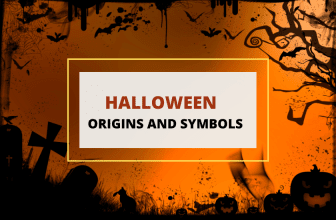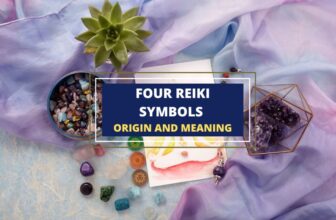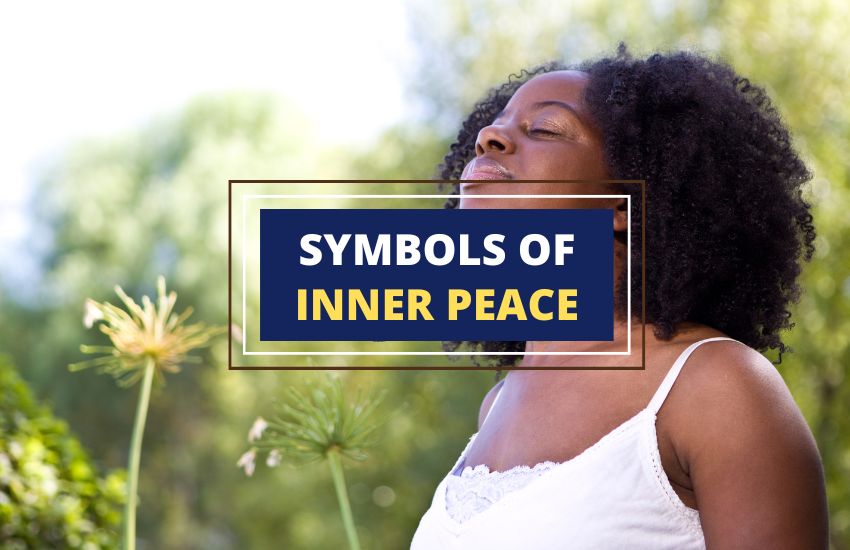
Table of Contents
In a world full of chaos, stress, and anxiety, finding inner peace has become a universal goal for many. The journey toward inner peace can be challenging, but the use of powerful symbols can help create a calm and tranquil atmosphere, allowing one to find solace and inner harmony.
These symbols are timeless and have been used for centuries, each carrying its unique meaning and purpose. From the simple yet powerful lotus flower to the lesser-known symbol of the labyrinth, each symbol represents a pathway toward finding inner peace.
Join us as we explore 20 powerful symbols of inner peace and learn how they can help guide us toward a more peaceful and fulfilling life.
1. Yin Yang Symbol
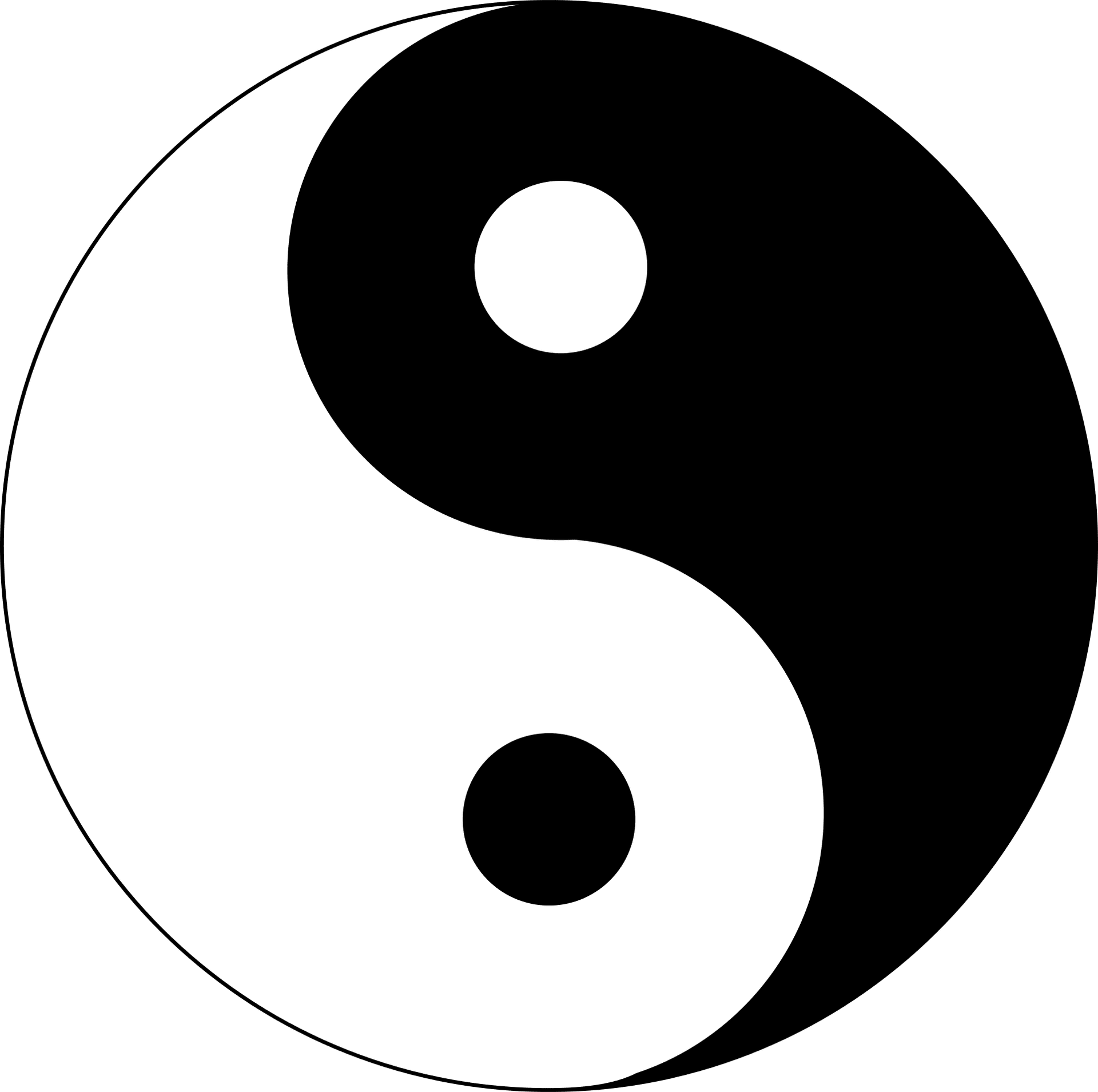
The yin-yang symbol represents the concept of balance and harmony between two opposing forces in the universe. The black and white halves of the symbol are interdependent and complementary, with each containing a part of the other.
This symbol is often associated with inner peace as it reflects the balance and harmony that we strive to achieve in our lives. It reminds us that we cannot have light without darkness and that both positive and negative experiences are necessary for growth and transformation.
2. Bodhi Tree

According to Buddhist tradition, it was under the Bodhi tree that Siddhartha Gautama, the founder of Buddhism, achieved enlightenment and became the Buddha. The tree represents the wisdom and insight that the Buddha gained during his meditation, and it serves as a reminder of the potential for enlightenment within each of us.
The Bodhi tree is also a symbol of growth and resilience, as it’s able to withstand harsh environmental conditions and continue to thrive. This quality represents the inner strength and resilience that are necessary for achieving inner peace, even in the face of life’s challenges.
Overall, the Bodhi tree serves as a powerful symbol of the journey toward inner peace and enlightenment, and it inspires us to cultivate the qualities of wisdom, insight, growth, and resilience in our own lives.
3. Aum/Om Symbol
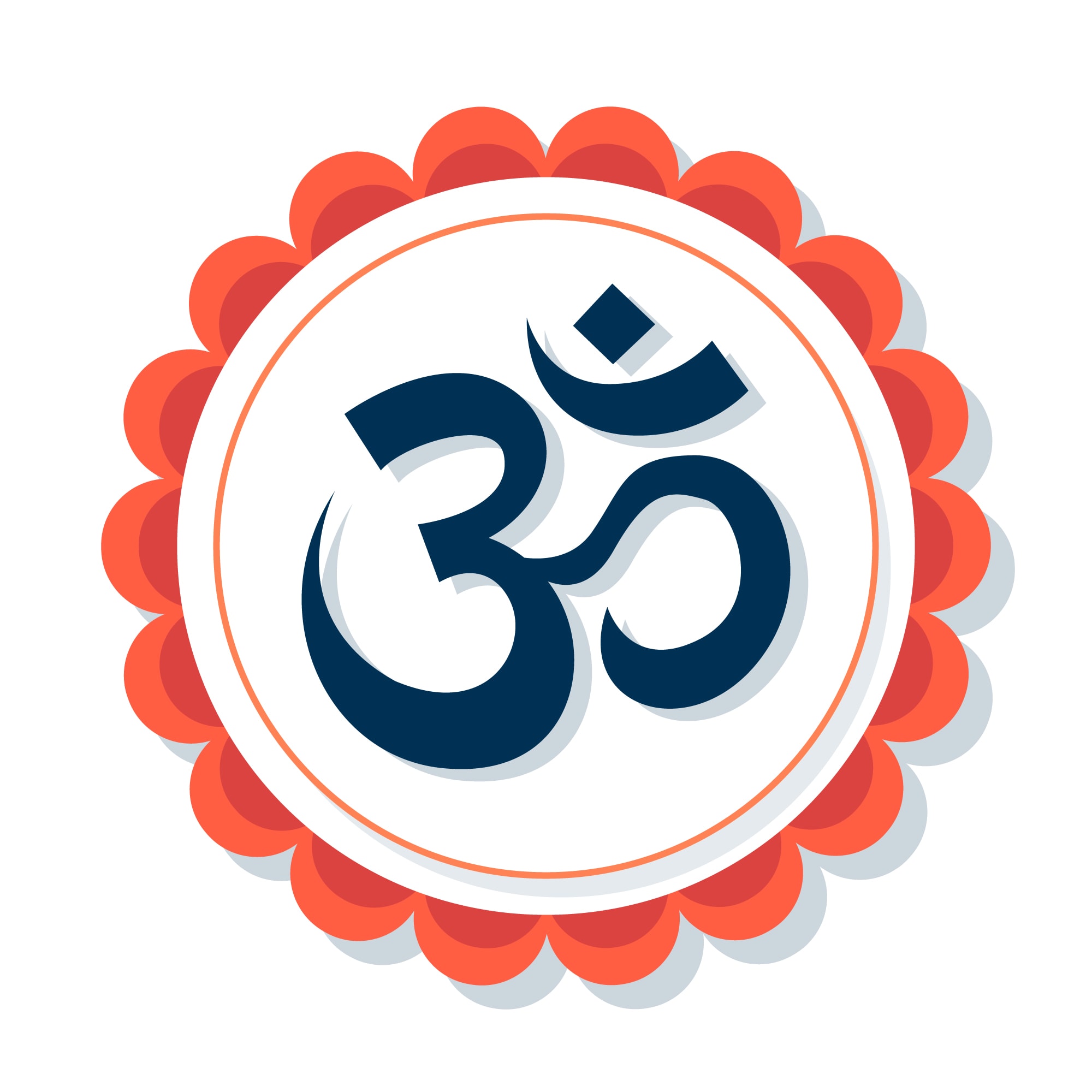
This ancient sound symbolizes the unity of mind, body, and spirit, which is essential for achieving inner peace. In Hinduism, Om is considered the sound of creation, the sound that connects us to the universe and the divine. Chanting Om is believed to calm the mind and bring a sense of peace and serenity.
The Om symbol is often used during yoga and meditation practices to help focus the mind and achieve a deeper level of inner peace. The symbol is also used in various forms of art and decoration to create a peaceful and harmonious atmosphere.
The simplicity of the Om symbol is also what makes it powerful as a symbol of inner peace. It’s elegant design and spiritual significance have made it a popular choice for those seeking to find inner peace and connect with their spirituality.
4. Lotus Flower
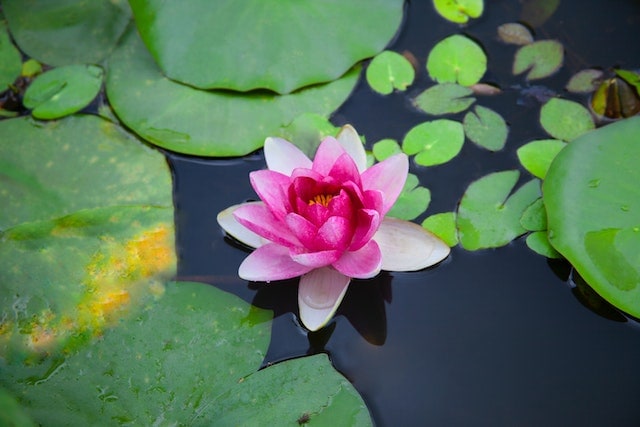
In Buddhism, the lotus flower is often used to symbolize the journey towards enlightenment, as it grows from muddy waters to bloom into a beautiful flower. The ability of the lotus to rise above the mud and still remain pure is a powerful reminder that even in difficult times, we can find peace and tranquility within ourselves.
The image of a blooming lotus is also used in meditation practices as a focal point, helping individuals find inner peace and stillness. It’s a timeless symbol that reminds us to seek beauty and tranquility within ourselves, even in the midst of chaos and challenges.
5. Zen Garden
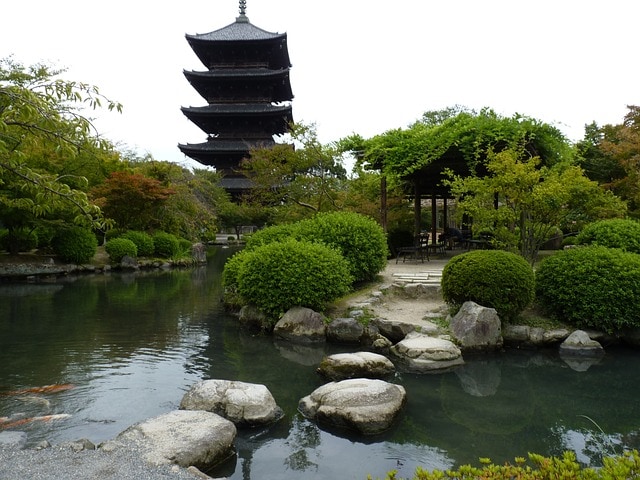
The Zen Garden, also known as Karesansui or “dry landscape,” is a traditional Japanese garden that symbolizes inner peace and harmony. It’s a minimalist design consisting of rocks, sand, and gravel arranged in a way that represents nature, with raked lines symbolizing waves or water.
The simplicity of the garden design promotes a calm and meditative state of mind, allowing individuals to detach from the stresses of daily life and find inner peace.
In addition to its aesthetic beauty, the Zen Garden also serves as a practical tool for stress relief and meditation. By creating patterns in the sand with a rake, individuals can enter a state of mindfulness and achieve a sense of inner peace.
6. Mandala

The mandala is a sacred symbol used in various spiritual and religious practices, but it has also gained popularity as a tool for promoting inner peace and well-being. The word “mandala” comes from the Sanskrit language and means “circle,” but it represents much more than just a simple shape.
Mandala art is a complex and intricate design that is often created in a meditative state, and it is believed that focusing on the creation of a mandala can help calm the mind and promote inner peace.
The symmetry and balance of the mandala design can also serve as a reminder of the interconnectedness of all things, which can further promote a sense of inner harmony and tranquility.
7. Dreamcatcher

The dreamcatcher is a symbol with deep roots in Native American culture and spirituality. Originally used as a way to protect individuals from nightmares and negative energies during sleep, it has since gained popularity as a decorative item and a symbol of inner peace.
The dreamcatcher is typically made of a woven hoop, often in the shape of a circle, with a web-like pattern in the center and feathers and beads hanging from the bottom. The intricate design is said to capture bad dreams and negative thoughts, allowing only positive and peaceful energy to pass through to the individual sleeping beneath it.
While the dreamcatcher is often used as a decorative item, it can also serve as a powerful reminder to focus on positive thoughts and promote a sense of inner peace and well-being.
8. Incense
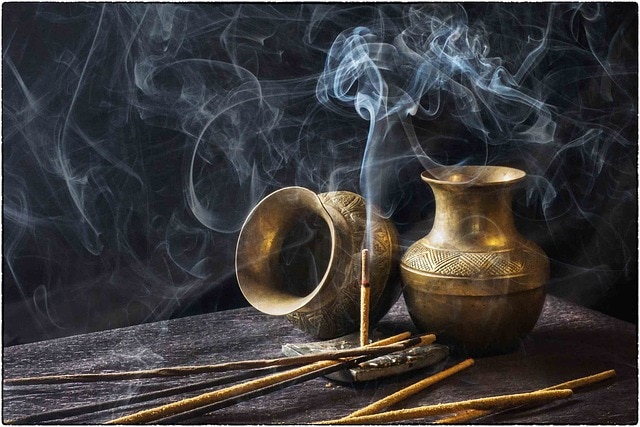
Incense is made from a variety of natural materials, such as herbs, spices, and resins, and when burned, it releases a fragrant smoke that is believed to have spiritual and therapeutic benefits. It’s been used for centuries in spiritual and religious practices as a way to purify the air and create a sacred atmosphere.
In many cultures, the burning of incense is a symbol of inner peace and a way to connect with a higher power. The act of lighting incense can be a meditative practice, allowing one to focus on the present moment and let go of stress and anxiety.
The soothing aroma can also promote relaxation and calmness, creating a peaceful atmosphere in which one can reflect and find inner harmony.
9. Mala Beads
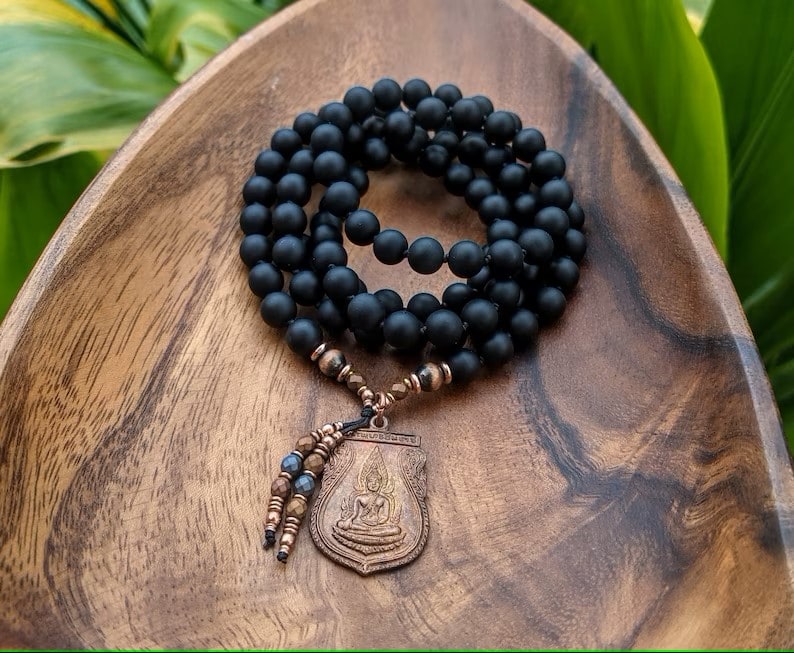
Mala beads are a spiritual tool used in Hinduism and Buddhism for centuries as a way to aid in meditation and prayer. These beads typically consist of 108 beads or a fraction of them and are made of natural materials such as wood or gemstones. Mala beads are used to recite mantras or prayers, with each bead representing a repetition of a phrase or intention.
The use of mala beads can be a powerful symbol of inner peace and mindfulness, helping to focus the mind and create a sense of calm and tranquility. The rhythmic movement of the beads through the fingers can also be a meditative practice, allowing one to let go of stress and distractions and connect with a deeper sense of self.
Whether used in a spiritual context or as a personal tool for reflection, mala beads can serve as a powerful reminder of the importance of inner peace and well-being.
10. Waterfall

Waterfalls are one of nature’s most beautiful and mesmerizing wonders, and they have long been associated with the calming and healing effects of water. Waterfalls are not just a symbol of natural beauty but can also be a symbol of inner peace.
The soothing sound of the water cascading down the rocks can have a calming effect on the mind and body, reducing stress and promoting relaxation. The sight of the water tumbling over the rocks can also be a reminder to let go of negative thoughts and emotions and to go with the flow of life.
Whether you’re standing near a waterfall or simply looking at a picture of one, it can serve as a powerful symbol of the importance of finding inner peace in a chaotic world.
11. Labyrinth
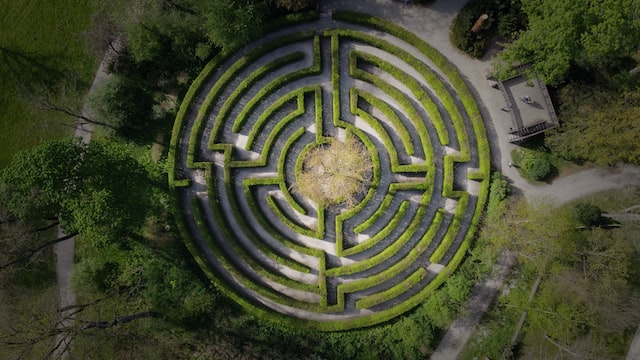
A labyrinth is an ancient symbol that has been used for thousands of years in various spiritual and religious practices. It is a complex geometric design that often consists of a winding path that leads to a central point, and then back out again.
Unlike a maze, which is designed to confuse and disorient, a labyrinth is intended to be a meditative tool, providing a path for reflection and self-discovery. Walking a labyrinth can be a powerful symbol of inner peace, allowing one to focus on the present moment and let go of distractions and stress.
The act of walking the labyrinth can promote a sense of calm and well-being, helping to quiet the mind and connect with a deeper sense of self. So, whether used in a spiritual or secular context, the labyrinth can serve as a powerful symbol of the importance of finding inner peace and tranquility.
12. Prayer Wheel
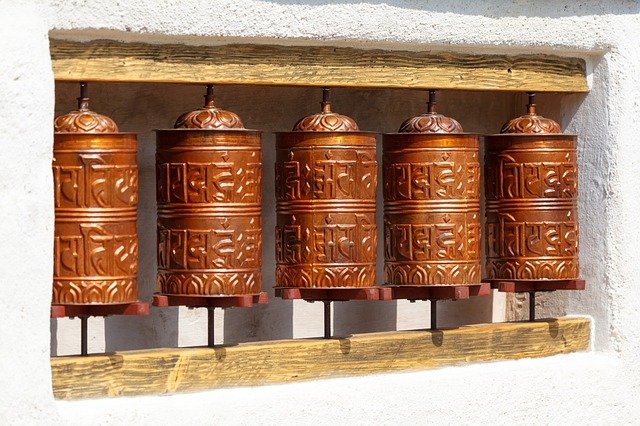
A prayer wheel is a spiritual tool used in Buddhism and other traditions as a way to recite mantras and prayers. It consists of a cylindrical container that contains a scroll with sacred texts, and when it is spun, the prayer is said to be released into the world.
The use of prayer wheels can be a powerful symbol of inner peace, representing the continuous cycle of life and the interconnectedness of all beings. Spinning the prayer wheel can be a meditative practice, helping to quiet the mind and cultivate a sense of inner peace and well-being.
The sound of the spinning wheel can also create a soothing and calming effect, promoting relaxation and tranquility.
13. Buddha Statue
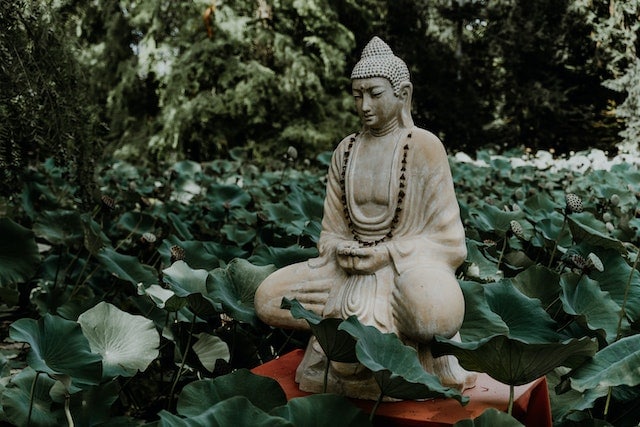
The Buddha statue is a representation of the historical Buddha, who achieved enlightenment and taught others to do the same. The statue’s serene expression and posture represent the Buddha’s state of inner peace and equanimity, and it’s a reminder to cultivate these qualities in ourselves.
The Buddha statue can also serve as a visual aid in meditation, helping to focus the mind and create a sense of calm and well-being. Additionally, the statue can represent the Buddha’s teachings of compassion, wisdom, and non-attachment, reminding us to let go of negative emotions and attachments that can disturb our inner peace.
Overall, the Buddha statue is a powerful symbol of the importance of finding inner peace and enlightenment in our lives.
14. Hamsa Hand
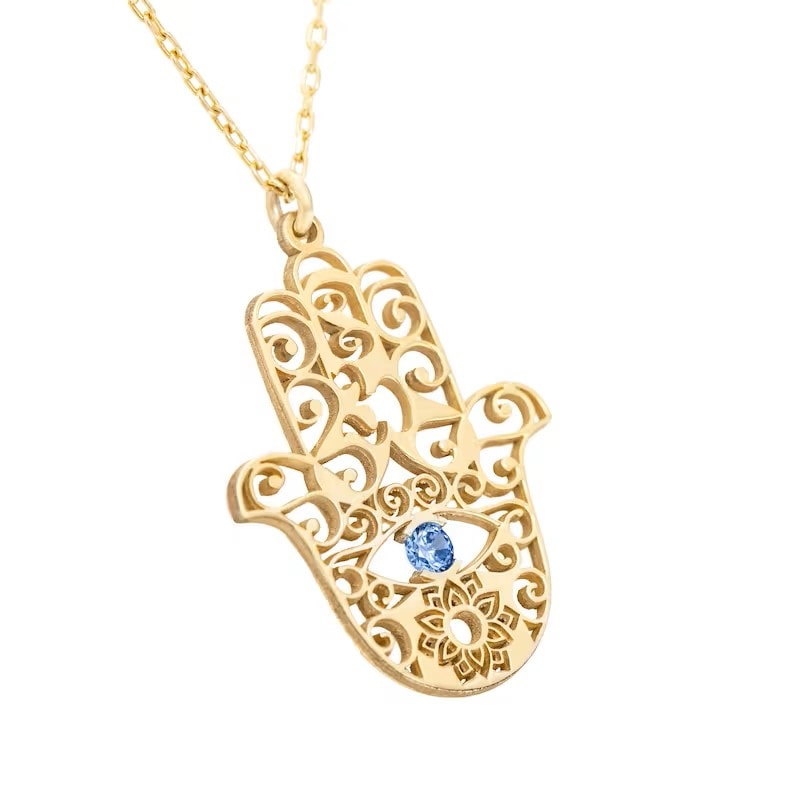
Also known as the Hand of Fatima or Hand of Miriam, the Hamsa Hand is a popular symbol in Middle Eastern and North African cultures. It’s a representation of a hand with an eye in the center and is believed to provide protection and ward off negative energy.
The Hamsa hand can also be seen as a symbol of inner peace, as the eye in the center is said to represent the all-seeing eye of God or the universe, reminding us of the interconnectedness of all things.
The hand itself can represent the power of positive action and the ability to overcome challenges and obstacles. By wearing or displaying the Hamsa hand, one can be reminded to cultivate inner peace and well-being and to trust in the power of positive action and protection.
15. Peace Sign

Peace sign, also known as the symbol of peace, was created in the 1950s as a symbol of anti-war sentiment, and it has since become a universal symbol of peace.
The circle surrounding the downward-pointing lines can be seen as a representation of unity and wholeness, reminding us that inner peace comes from embracing all aspects of ourselves and recognizing our interconnectedness.
The downward pointing lines can be interpreted as a symbol of humility, encouraging us to let go of our ego and to approach others with compassion and understanding.
16. Sun and Moon
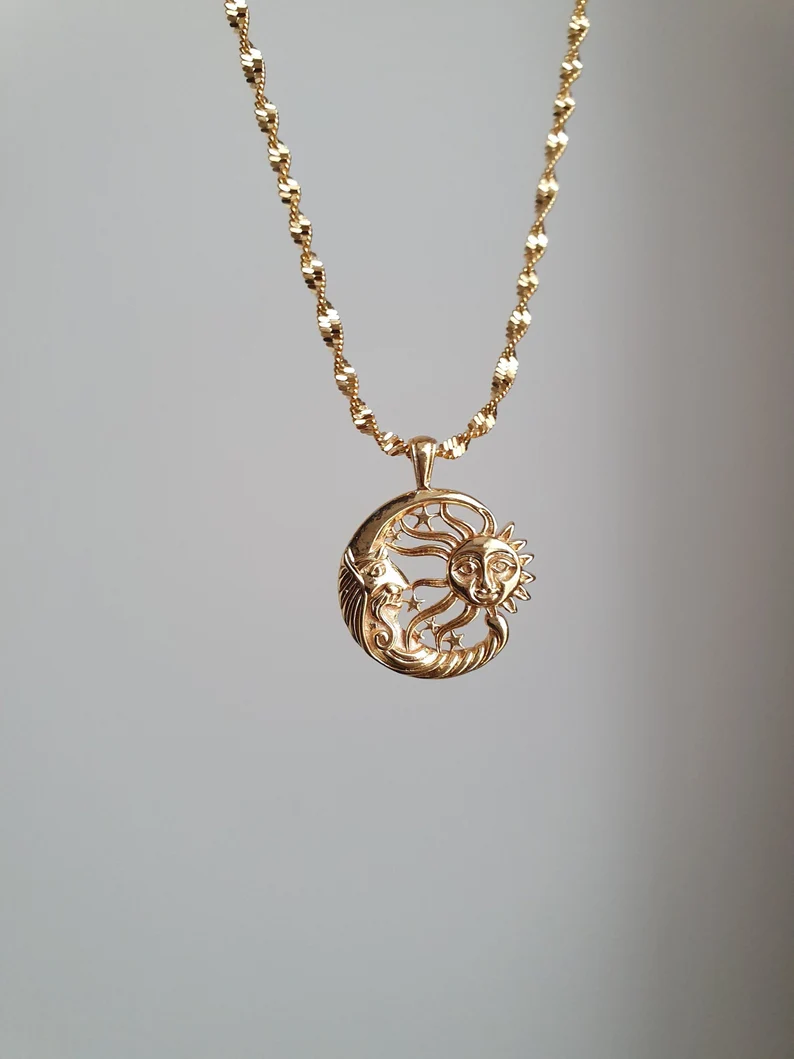
The sun and moon are often seen as symbols of balance and harmony, representing the cyclical nature of life and the need to embrace both light and dark aspects of ourselves.
The sun is often associated with masculine energy, representing vitality, strength, and action, while the moon is associated with feminine energy, representing intuition, receptivity, and reflection.
Together, they can represent the balance between action and rest, and the need to find harmony between the different aspects of our lives. By embracing both the sun and the moon within ourselves, we can cultivate inner peace by finding balance and harmony in our lives.
17. Feather

Feathers have been used as symbols of spiritual and emotional growth for centuries, representing the journey of the soul and the quest for inner peace.
Feathers can serve as a reminder to let go of past mistakes and to embrace our own unique journey, reminding us to have faith in the process of personal growth.
Feathers can also be seen as a symbol of lightness and freedom, representing the ability to rise above challenges and difficulties and to find a sense of peace in the midst of chaos.
18. Celtic Knot
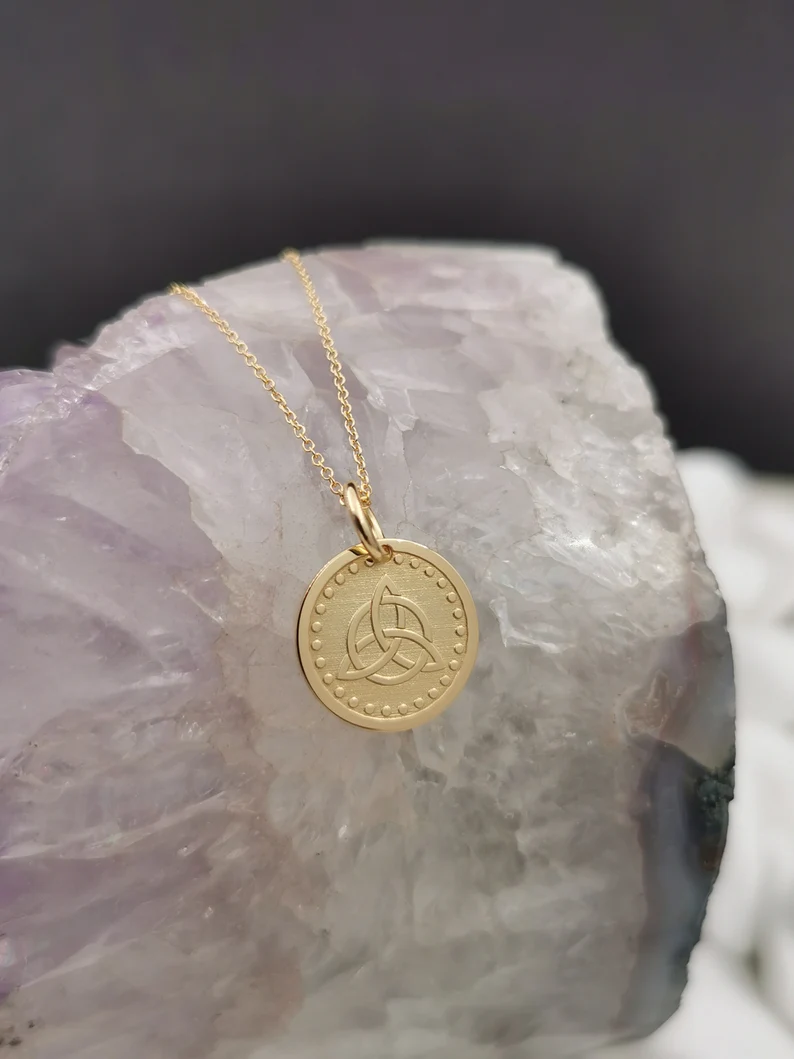
This knot is often seen as a symbol of interconnectedness and unity, representing the complex and interconnected nature of the universe. The knot can also be seen as a symbol of the cyclical nature of life, reminding us that everything is connected and that every action has a consequence.
By embracing the Celtic knot, we can cultivate inner peace by recognizing our interconnectedness with all things, and by approaching the world with a sense of humility and gratitude.
19. Abalone Shell
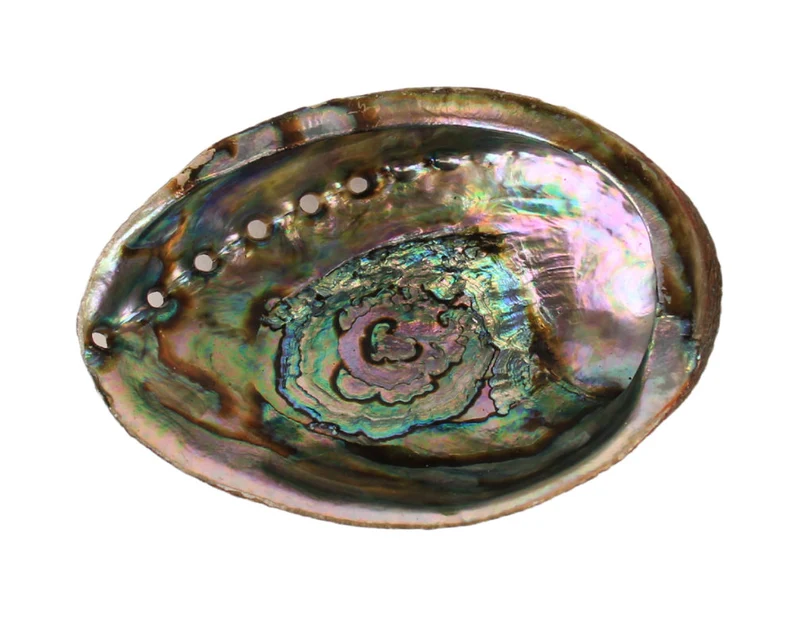
The beautiful iridescent colors of the shell are a reminder of the ever-changing nature of life and the importance of embracing impermanence. The shell is often used in spiritual practices such as smudging, which involves burning sage or other herbs to cleanse and purify a space or individual.
The cleansing smoke is said to carry negative energy away, leaving behind a sense of peace and clarity. By using the abalone shell in this way, we can tap into its powerful energy and connect more deeply with our inner selves.
Overall, the abalone shell is a beautiful reminder of the healing power of nature and our own ability to find peace and balance in a world that is constantly changing.
20. Crystal Clusters
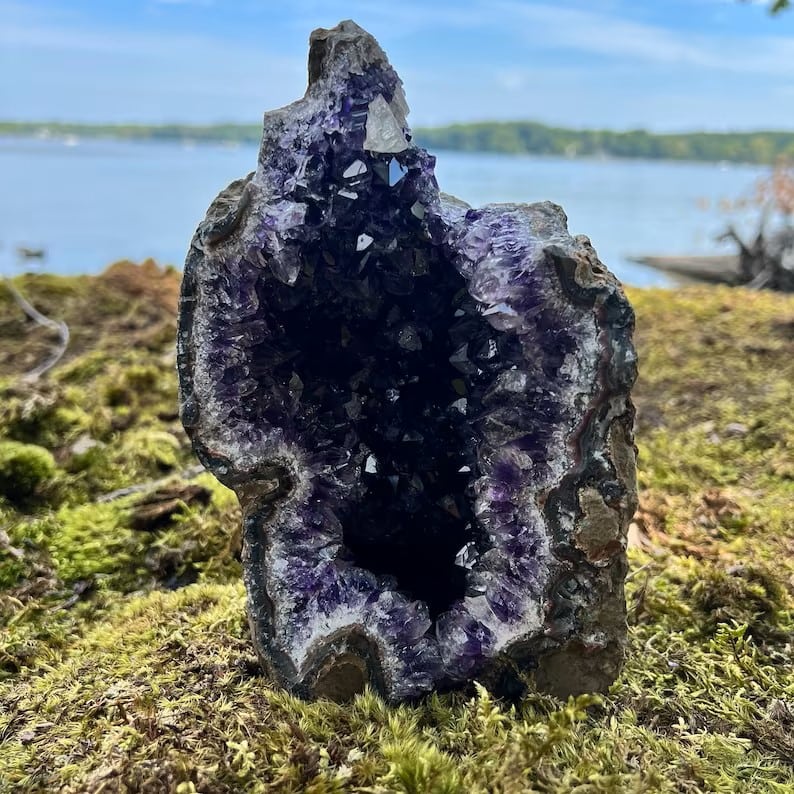
Beautiful formations of crystals are believed to radiate positive energy and enhance the flow of energy within a space. Crystals are believed to possess their own unique energies, each with its own specific properties and vibrations.
When used for meditation or healing purposes, crystals can help to promote feelings of calmness, relaxation, and inner peace. They’re also believed to enhance intuition and promote spiritual growth, allowing individuals to connect more deeply with their inner selves and with the universe as a whole.
Wrapping Up
Symbols of inner peace can be found in a variety of different forms and traditions, from the mandala and dreamcatcher to the Buddha statue and crystal clusters.
These symbols remind us of the importance of finding balance and harmony in our lives, and of cultivating a sense of connection to the world around us.
Whether we turn to these symbols for meditation, healing, or simply as a reminder of our own inner strength, they can serve as powerful tools for cultivating a sense of calmness, clarity, and inner peace.
Similar articles:
Top 14 Symbols of Courage and Resilience and What They Mean
12 Powerful Symbols of Truth & Lies – A List
25 Powerful Eternity & Immortality Symbols (With Meanings)






